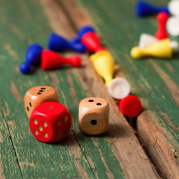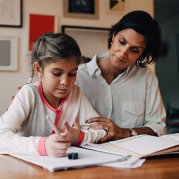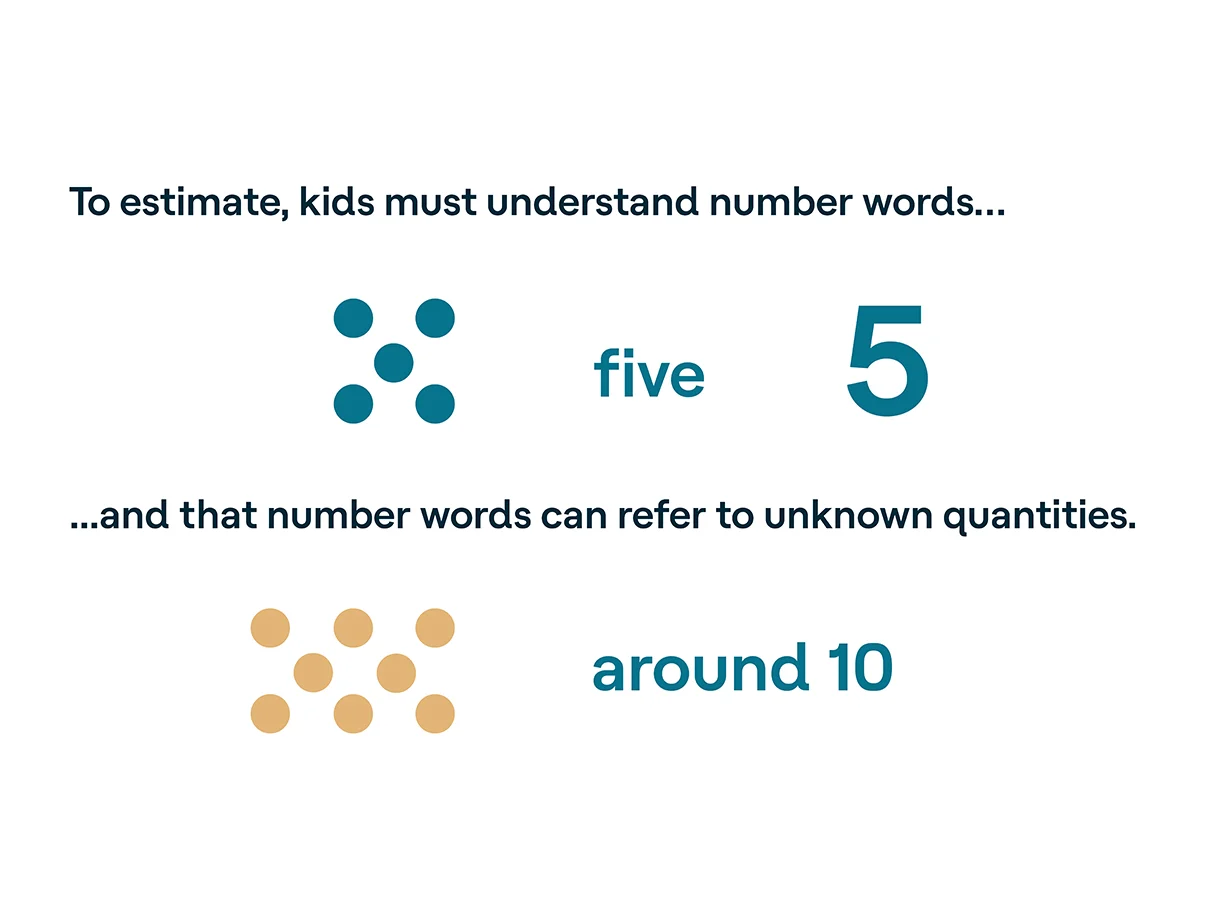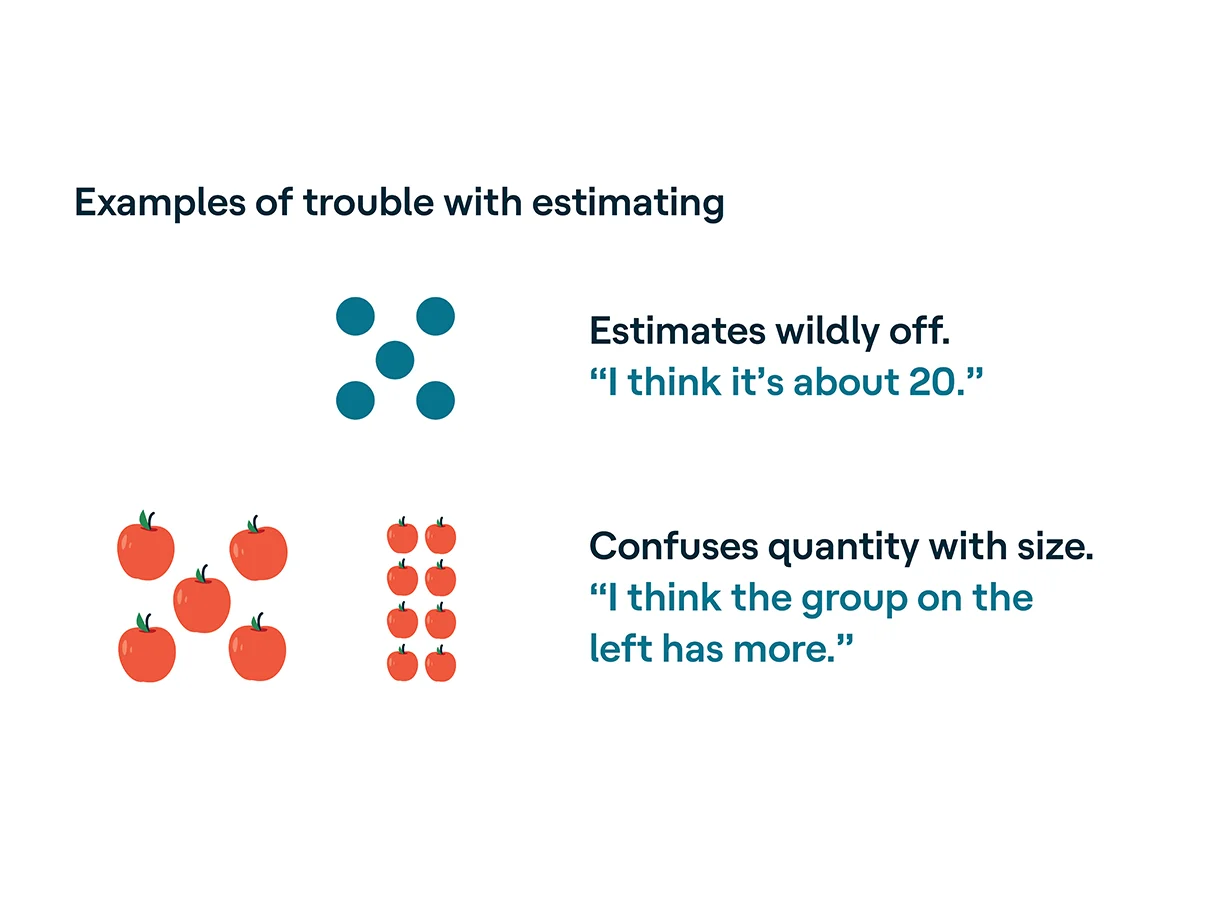Why kids struggle with estimating quantities

Expert reviewed by Daniel Ansari, PhD
Quick tips to help kids with estimating
- Quick tip 1Use hands-on tools.
 Use hands-on tools.
Use hands-on tools.Hands-on objects or “manipulatives” can help kids visualize amounts. Try using objects like blocks, beads, buttons, game pieces, or small toys to help with estimating.
- Quick tip 2Ask how they approached the problem.
 Ask how they approached the problem.
Ask how they approached the problem.Have kids talk through how they tried to solve the problem, and where they got stuck. If you’re comfortable, try doing a problem together — and share your thinking out loud as you do it.
- Quick tip 3Talk about your own trouble with math.
 Talk about your own trouble with math.
Talk about your own trouble with math.If you’ve struggled with math, it’s OK to say so. When kids know they’re not the only ones struggling, it can help them feel less alone. Together, make an action plan to improve.
- Quick tip 4Take a break.
 Take a break.
Take a break.A quick break from tricky math helps kids return ready to work and learn. Try two minutes of deep breathing, stretching, or active movement like jumping jacks.
- Quick tip 5Work math into everyday conversation.
 Work math into everyday conversation.
Work math into everyday conversation.Use phrases like “about how many” or “about how much” to practice estimating in everyday life. For example, “About how many people are standing in line?”
How many juice boxes do we need for the party? About how many coins are in the jar? Estimating “how many” is a math skill we use almost every day. It’s also a skill that many kids struggle with.
A big reason kids have trouble estimating “how many” is because they haven’t learned basic math skills like number sense. Number sense is a set of skills that help you understand how numbers relate to each other, like if 10 is more or less than 5. Without these skills, estimation is very difficult.
Even when they know the basics, kids might still struggle if estimation hasn’t been clearly explained to them. They may think numbers have to be exact. And they may not have had enough practice trying to guess different quantities.
All kids develop differently. Some pick up math skills and learn how to estimate with just a bit of teaching. Others need extra practice and time to learn. And some kids continue to struggle with estimating even after teaching and practice.
This could be a sign of an underlying challenge in math. A common one is a learning difference called dyscalculia. See a list of signs of dyscalculia.
Dive deeper
Basic math skills for estimating
Kids aren’t born knowing how to estimate. It’s a skill that needs to be taught. It involves:
Understanding quantity. Babies are born with a basic sense of quantity. Young kids can typically sense when some quantity is more than another, but they don’t automatically know how to say it in words.
Representing quantities. Kids need to match a number word to a quantity, like saying “five” to represent five dots. They also need to know that the numeral 5 is the same as the word five, and that both represent a group of five objects.

Understanding that quantities don’t have to be fixed. Kids need to grasp the idea that “around 10 dots” might be more or less than exactly 10.
Counting and calculating. Kids’ ability to estimate improves as they get better at counting and calculating exact numbers. For example, knowing that 20 + 20 = 40 makes it a lot easier to estimate what 23 + 25 is.
Learn more about number sense skills.
What trouble estimating looks like
When kids have trouble with estimating, you might see them:
Give estimates that are wildly off
Change their estimate if an object is bigger in size — for example, estimating that a group of five large apples is more than a group of eight small apples
Not understand that an estimate doesn’t have to be an exact number
Get stuck and not be able to guess or give an estimate at all

Learn more about different ways kids can struggle with math.
Next steps
When kids have trouble estimating, families and educators should work together to understand what’s happening. Start by sharing notes on what you’re seeing. Then talk about strategies to try at school and at home. With time and practice, kids can get better at estimating.
Parents and caregivers: Help your child practice math outside of school, and talk to the teacher about math difficulties you’re seeing.
Educators: Learn more about evidence-based ways to teach math. You can use these teaching practices to help every student learn math at all grade levels.


